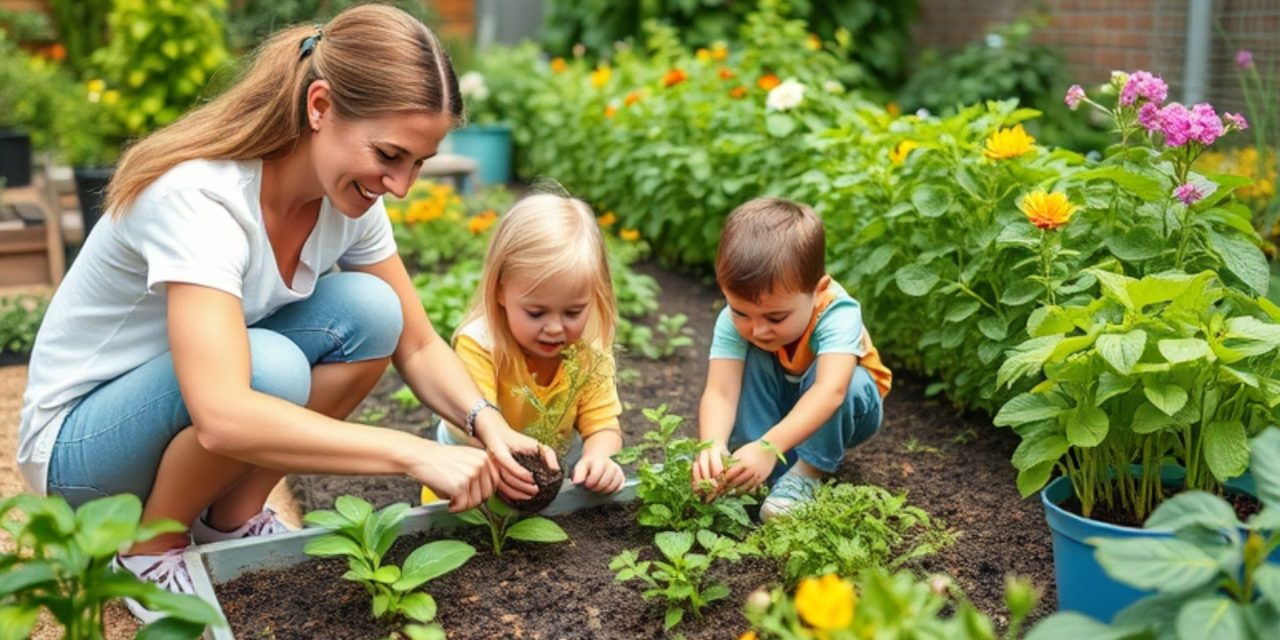Gardening with your children is not only a great way to spend quality time together, but it also introduces them to important life skills and environmental awareness.
A kid-friendly garden can provide endless opportunities for learning, creativity, and outdoor fun. Whether you have a sprawling yard or a small balcony, here’s how to create a garden that your kids will love and nurture.
Why Gardening is Great for Kids
Gardening offers a wealth of benefits for children:
- Encourages Responsibility: Kids learn to care for living things by watering, weeding, and observing growth.
- Boosts Mental Health: Spending time in nature reduces stress and promotes a sense of well-being.
- Teaches Patience: Plants take time to grow, teaching kids the value of patience and perseverance.
- Supports Learning: Gardening introduces concepts like plant biology, weather, and ecosystems.
- Fosters Creativity: Designing and decorating the garden sparks imagination.
Steps to Create a Kid-Friendly Garden
1. Choose a Location
Select a space that’s safe and accessible for kids. Consider:
- Sunny Spots: Most plants need at least 6 hours of sunlight per day.
- Small Areas: Raised beds, pots, or window boxes work well for limited spaces.
- Shaded Areas: Include spots for breaks and shade-loving plants.
2. Plan the Garden Together
Involve your children in the planning process to get them excited:
- Choose Plants: Let them pick flowers, vegetables, or herbs that interest them.
- Sketch a Layout: Draw a simple garden plan together.
- Set Themes: Create a “butterfly garden” or a “rainbow garden” with colorful blooms.
3. Select Easy-to-Grow Plants
Start with plants that grow quickly and are forgiving of mistakes. Some kid-friendly options include:
- Flowers: Marigolds, sunflowers, and zinnias.
- Vegetables: Cherry tomatoes, carrots, and snap peas.
- Herbs: Basil, mint, and chives.
4. Gather Tools and Supplies
Provide child-sized tools to make gardening easier and safer:
- Hand trowels and shovels.
- Watering cans or spray bottles.
- Gardening gloves for little hands.
- Labels for marking plants.
5. Make It Fun and Interactive
Transform gardening into a playful and engaging experience:
- Decorate Pots: Use paint or stickers to personalize planters.
- Create Garden Markers: Craft colorful labels for each plant.
- Incorporate Wildlife: Add a birdhouse, bee hotel, or butterfly feeder.
- Build Structures: Design simple trellises for climbing plants.
Gardening Activities for Kids
1. Start a Seed Journal
Track the growth of seeds by measuring and drawing their progress. Kids can record observations like changes in height and leaf size.
2. Experiment with Science
Introduce fun experiments like:
- Growing beans in a clear jar to observe root development.
- Comparing how plants grow in different conditions (light vs. dark, water vs. no water).
3. Harvest and Cook Together
When the garden produces fruits, veggies, or herbs, involve your kids in harvesting and preparing meals. This teaches the value of farm-to-table eating.
4. Create a Fairy Garden
Set aside a small area for whimsical decorations like tiny houses, figurines, and pebbled pathways.
Tips for Success
- Start Small: Avoid overwhelming young gardeners by focusing on a few plants.
- Be Patient: Allow kids to make mistakes and learn from them.
- Celebrate Achievements: Praise their efforts, whether it’s planting seeds or watering diligently.
- Keep It Safe: Supervise the use of tools and ensure the garden area is free of hazards.
The Lifelong Benefits of Gardening
By creating a kid-friendly garden, you’re not just cultivating plants—you’re nurturing curiosity, responsibility, and a love for the natural world. These skills and values will stay with your children for a lifetime, enriching their understanding of the environment and the joys of outdoor activity.
Ready to dig in and start your family garden adventure? Visit Marvelus Kids for more creative gardening ideas and tips to help you create the perfect green space for your kids!









